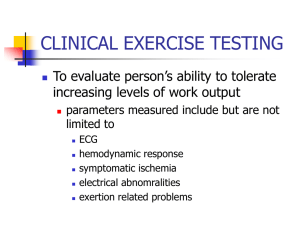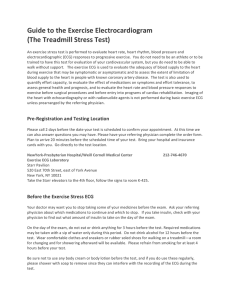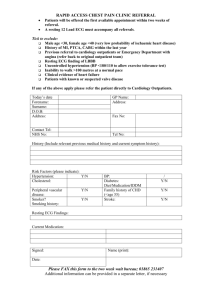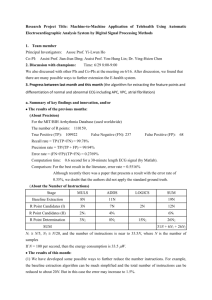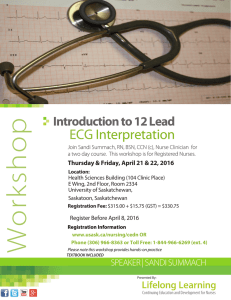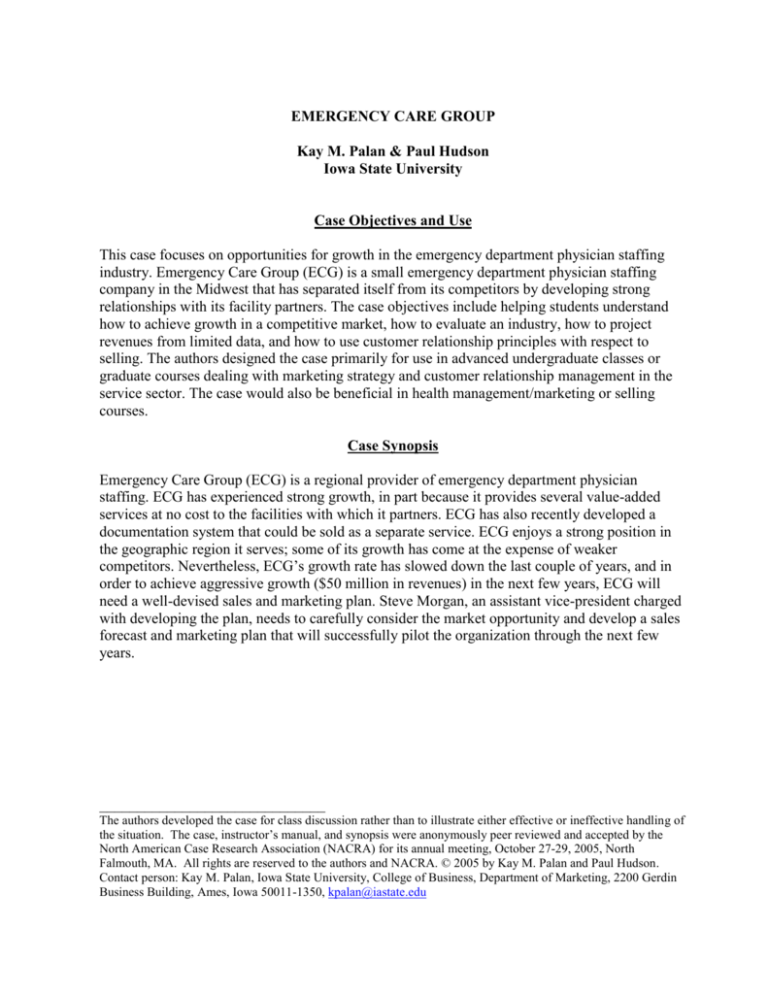
EMERGENCY CARE GROUP
Kay M. Palan & Paul Hudson
Iowa State University
Case Objectives and Use
This case focuses on opportunities for growth in the emergency department physician staffing
industry. Emergency Care Group (ECG) is a small emergency department physician staffing
company in the Midwest that has separated itself from its competitors by developing strong
relationships with its facility partners. The case objectives include helping students understand
how to achieve growth in a competitive market, how to evaluate an industry, how to project
revenues from limited data, and how to use customer relationship principles with respect to
selling. The authors designed the case primarily for use in advanced undergraduate classes or
graduate courses dealing with marketing strategy and customer relationship management in the
service sector. The case would also be beneficial in health management/marketing or selling
courses.
Case Synopsis
Emergency Care Group (ECG) is a regional provider of emergency department physician
staffing. ECG has experienced strong growth, in part because it provides several value-added
services at no cost to the facilities with which it partners. ECG has also recently developed a
documentation system that could be sold as a separate service. ECG enjoys a strong position in
the geographic region it serves; some of its growth has come at the expense of weaker
competitors. Nevertheless, ECG’s growth rate has slowed down the last couple of years, and in
order to achieve aggressive growth ($50 million in revenues) in the next few years, ECG will
need a well-devised sales and marketing plan. Steve Morgan, an assistant vice-president charged
with developing the plan, needs to carefully consider the market opportunity and develop a sales
forecast and marketing plan that will successfully pilot the organization through the next few
years.
______________________________
The authors developed the case for class discussion rather than to illustrate either effective or ineffective handling of
the situation. The case, instructor’s manual, and synopsis were anonymously peer reviewed and accepted by the
North American Case Research Association (NACRA) for its annual meeting, October 27-29, 2005, North
Falmouth, MA. All rights are reserved to the authors and NACRA. © 2005 by Kay M. Palan and Paul Hudson.
Contact person: Kay M. Palan, Iowa State University, College of Business, Department of Marketing, 2200 Gerdin
Business Building, Ames, Iowa 50011-1350, kpalan@iastate.edu





